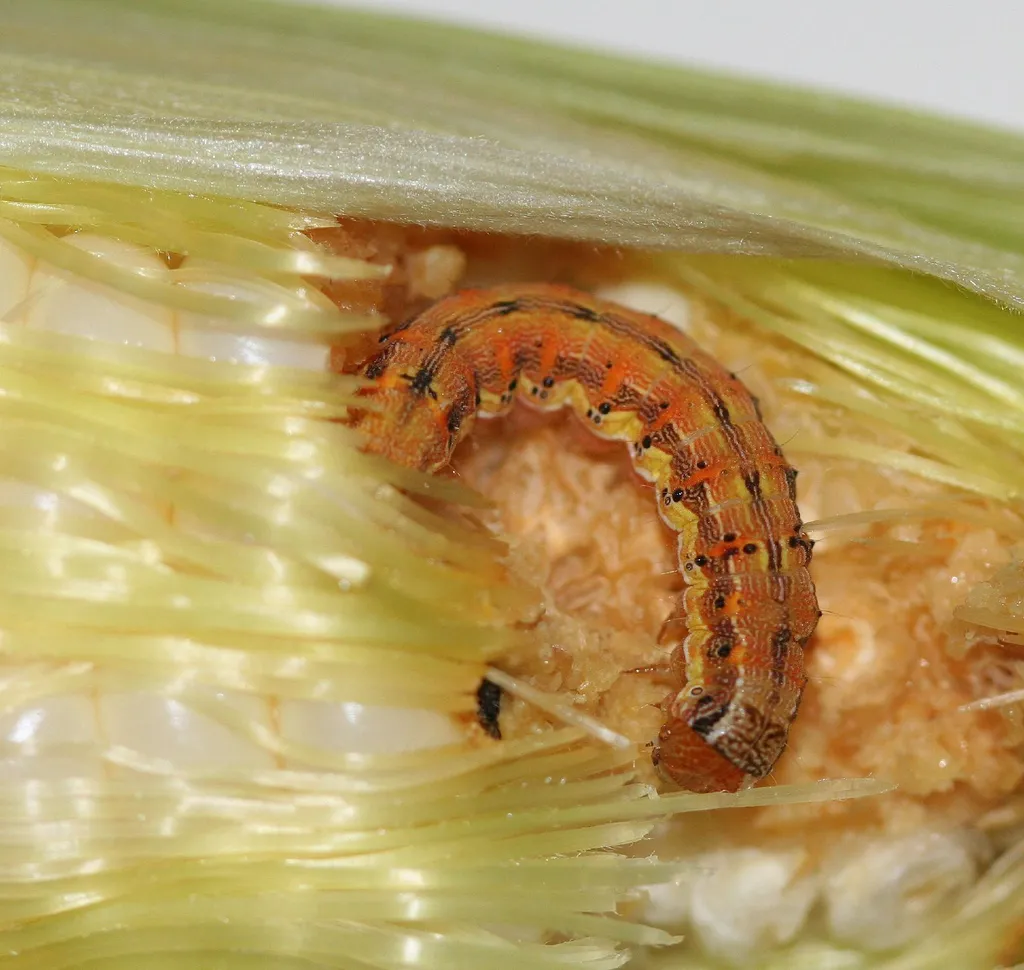- October 14, 2024
- By Kathryn Klett M.P.P. ’25
Environmentally friendly, sustainable pesticides are popular with consumers, who are more likely to purchase sweet corn from their local market that hasn’t been sprayed with potentially harmful chemicals.
Now, supported by a $650,000 grant from the U.S. Department of Agriculture (USDA), two University of Maryland researchers have teamed up to help ensure these pest-fighting methods remain on the table, in part by understanding why a common pest known as the corn earworm, or H. zea, has developed resistance to pesticides widely used in farming.

The researchers—Megan Fritz, an associate professor of entomology with an affiliate appointment in the University of Maryland Institute of Advanced Computer Studies (UMIACS), and Erin Molloy, an assistant professor of computer science who is also in UMIACS—plan to share the knowledge with federal regulators, private industry and agricultural producers, providing strategies to monitor for and manage growing pesticide resistance before a crisis arises.
They’re particularly interested in tracking genetic mutations that occur in insects that ingest proteins from Bacillus thuringiensis, or Bt, a bacterium that occurs naturally in soil and has been combined with some types of corn. These proteins are not toxic to humans, but have proven effective against agricultural pests like the earworm.
Bt-corn is a genetically modified, or transgenic crop that produces the proteins as it grows, and is widely used for cornmeal, tortilla chips, and other human and animal food products. Fritz and others previously showed that over time, H. zea that ingested Bt crops developed resistance to the Bt proteins expressed by transgenes in the plant. Now the researchers want to determine whether signals of resistance can be detected early—before resistance scales up to a level that presents significant challenges to farmers.
The earworm is practically everywhere, and mutations spread quickly among populations, said Fritz, the project’s principal investigator. Eating transgenic corn with just enough Bt protein to impact H. zea’s growth and development, but not kill all corn-feeding caterpillars may be responsible. This “low dose” of Bt protein allowed mutations that likely existed in the H. zea genome before these crops were widely used to accumulate over time.
The UMD researchers are trying to identify the scale and timeline of those mutations before these pesticides lose their viability by tracking H. zea’s genome to find early signs of evolutionary resistance to environmentally friendly pesticides.
They believe their work might determine whether other pest species need similar genomic monitoring.
“Many of the pest species that are most problematic are like H. zea: They have similar genetic and population demographic qualities that might make them amenable to genomic resistance monitoring,” said Fritz, an affiliate member of the Center for Bioinformatics and Computational Biology.
Molloy is handling much of the computational end of the project, with help from first-year computer science Ph.D. student Junyan Dai.
“There are currently no computational tools for detecting certain mutations commonly involved in resistance evolution from genomic monitoring datasets collected over time. The goal of our interdisciplinary USDA project is to bridge this gap,” Molloy said.
Also assisting on the project is Kate Taylor, a former postdoctoral researcher in Fritz’s lab who is now an assistant professor of computational biology at Hofstra University. Fritz credits Taylor with much of the foundational research leading up to the current USDA project.
Another team member is Abuzar Bhatty, a third-year Ph.D. student in UMD’s Computational Biology, Bioinformatics and Genomics Program. Bhatty is developing whole genome simulations of H. zea and other insect species that may provide answers for scientists researching other pest species.
This includes the notorious Colorado potato beetle, whose historical levels of resistance to multiple pesticides left farmers stranded with few pest management options; at some points in history, flamethrowers became the most viable option for their control.
Ultimately, Fritz’s hope is that this interdisciplinary project that joins entomologists with computer scientists will help prevent the loss of these transgenic pesticides to a “tragedy of the commons” situation.
“Susceptibility to an insecticide, or a pesticide, is one of those common goods no one thinks about—everybody loves [sustainable pest management] until it’s gone. And when it’s gone, it impacts all of us,” she said.
